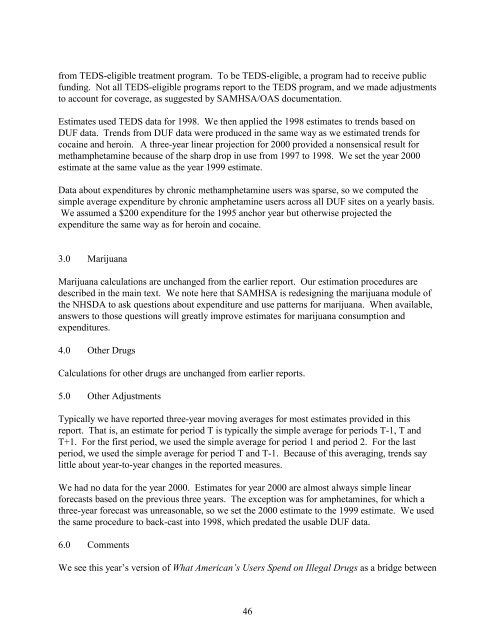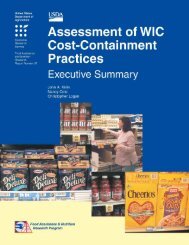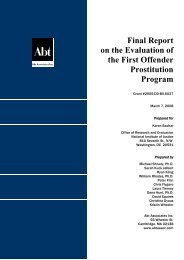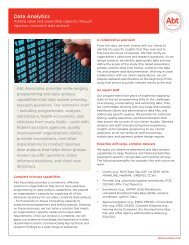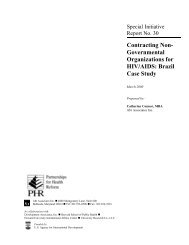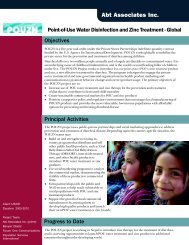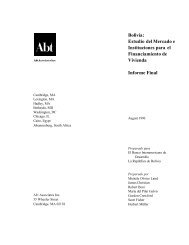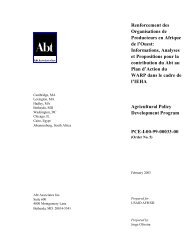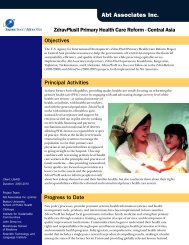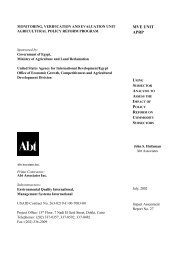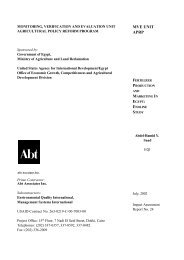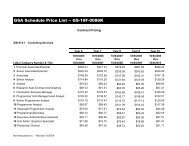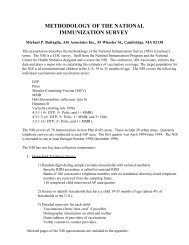What America's Users Spend on Illegal Drugs 1988-2000 - National ...
What America's Users Spend on Illegal Drugs 1988-2000 - National ...
What America's Users Spend on Illegal Drugs 1988-2000 - National ...
- No tags were found...
You also want an ePaper? Increase the reach of your titles
YUMPU automatically turns print PDFs into web optimized ePapers that Google loves.
from TEDS-eligible treatment program. To be TEDS-eligible, a program had to receive publicfunding. Not all TEDS-eligible programs report to the TEDS program, and we made adjustmentsto account for coverage, as suggested by SAMHSA/OAS documentati<strong>on</strong>.Estimates used TEDS data for 1998. We then applied the 1998 estimates to trends based <strong>on</strong>DUF data. Trends from DUF data were produced in the same way as we estimated trends forcocaine and heroin. A three-year linear projecti<strong>on</strong> for <strong>2000</strong> provided a n<strong>on</strong>sensical result formethamphetamine because of the sharp drop in use from 1997 to 1998. We set the year <strong>2000</strong>estimate at the same value as the year 1999 estimate.Data about expenditures by chr<strong>on</strong>ic methamphetamine users was sparse, so we computed thesimple average expenditure by chr<strong>on</strong>ic amphetamine users across all DUF sites <strong>on</strong> a yearly basis.We assumed a $200 expenditure for the 1995 anchor year but otherwise projected theexpenditure the same way as for heroin and cocaine.3.0 MarijuanaMarijuana calculati<strong>on</strong>s are unchanged from the earlier report. Our estimati<strong>on</strong> procedures aredescribed in the main text. We note here that SAMHSA is redesigning the marijuana module ofthe NHSDA to ask questi<strong>on</strong>s about expenditure and use patterns for marijuana. When available,answers to those questi<strong>on</strong>s will greatly improve estimates for marijuana c<strong>on</strong>sumpti<strong>on</strong> andexpenditures.4.0 Other <strong>Drugs</strong>Calculati<strong>on</strong>s for other drugs are unchanged from earlier reports.5.0 Other AdjustmentsTypically we have reported three-year moving averages for most estimates provided in thisreport. That is, an estimate for period T is typically the simple average for periods T-1, T andT+1. For the first period, we used the simple average for period 1 and period 2. For the lastperiod, we used the simple average for period T and T-1. Because of this averaging, trends saylittle about year-to-year changes in the reported measures.We had no data for the year <strong>2000</strong>. Estimates for year <strong>2000</strong> are almost always simple linearforecasts based <strong>on</strong> the previous three years. The excepti<strong>on</strong> was for amphetamines, for which athree-year forecast was unreas<strong>on</strong>able, so we set the <strong>2000</strong> estimate to the 1999 estimate. We usedthe same procedure to back-cast into 1998, which predated the usable DUF data.6.0 CommentsWe see this year’s versi<strong>on</strong> of <str<strong>on</strong>g>What</str<strong>on</strong>g> American’s <str<strong>on</strong>g>Users</str<strong>on</strong>g> <str<strong>on</strong>g>Spend</str<strong>on</strong>g> <strong>on</strong> <strong>Illegal</strong> <strong>Drugs</strong> as a bridge between46


